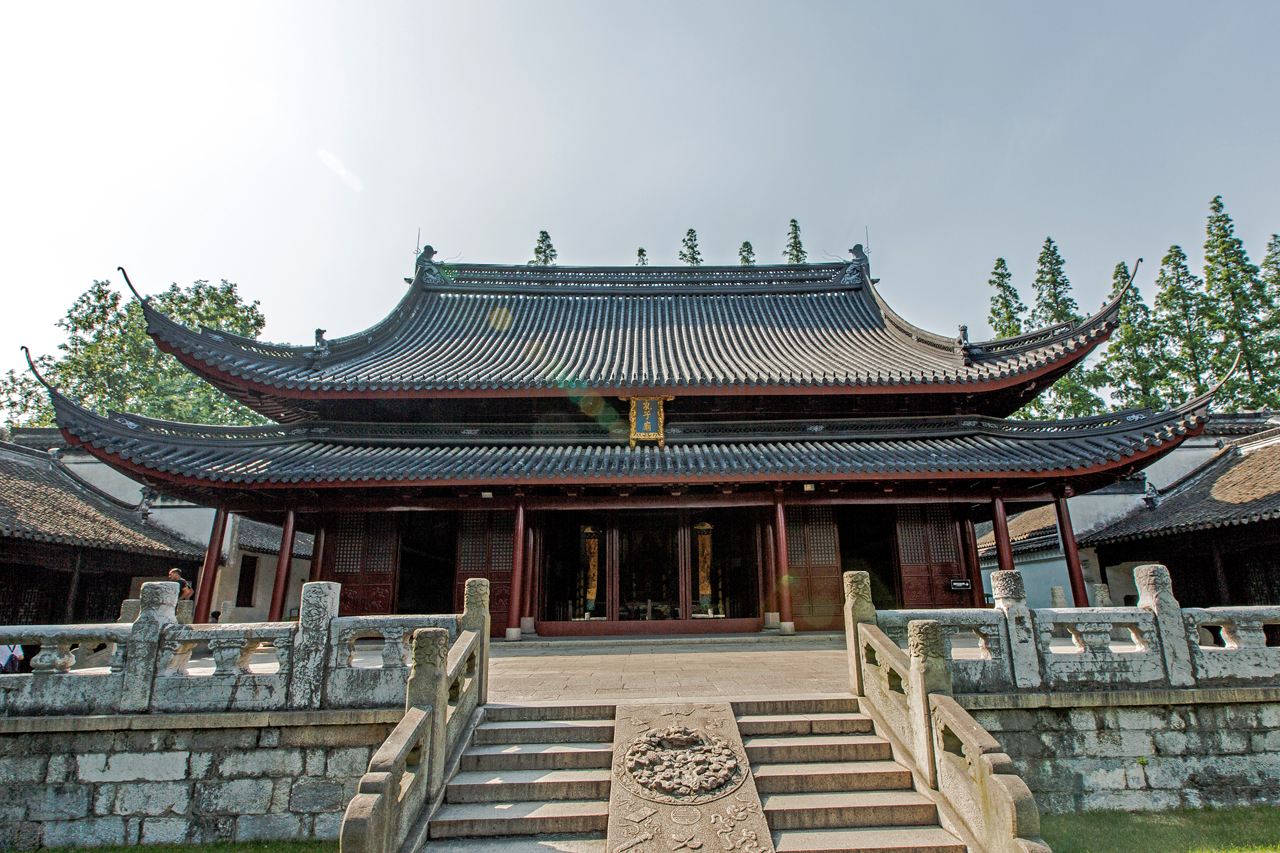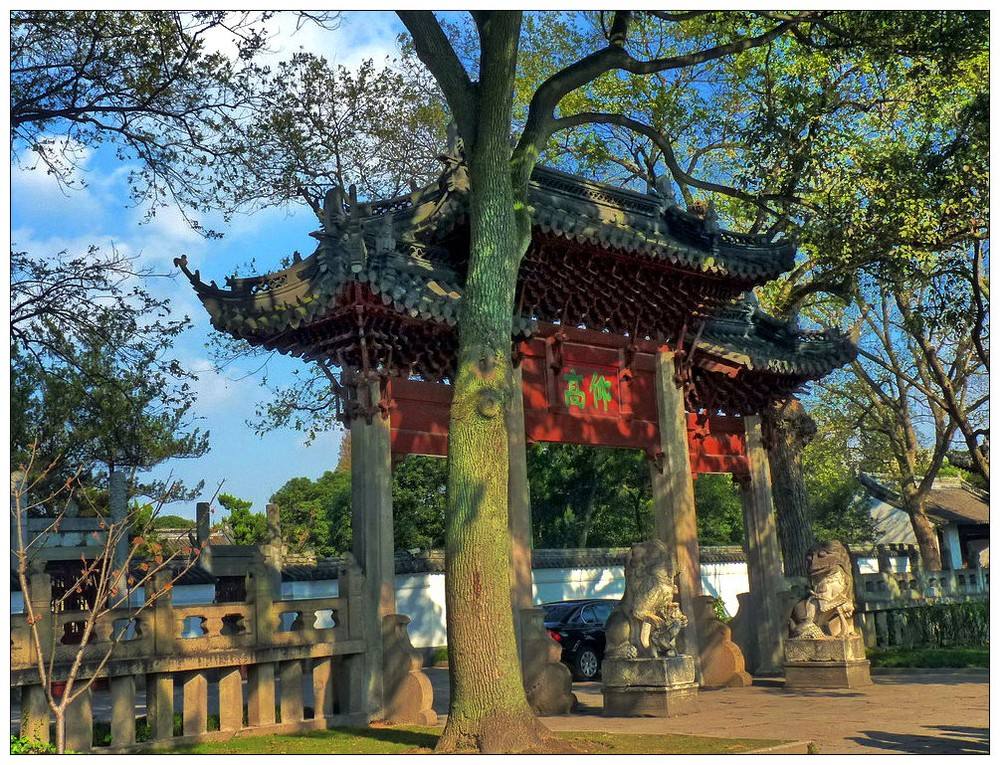24 Hours Hotline: +86 137-3541-1378
Email:[email protected]
24 Hours Hotline: +86 137-3541-1378
Email:[email protected]

A travel experience doesn’t have to mean leaving the city. Each of Shanghai’s districts has its own personality and interesting places to visit.
What better time to take a closer look at Jiading District than during the celebration of its 800-year anniversary!
In 1217, during what were called the “Jiading years” of the Southern Song Dynasty (1127-1279), the reigning government decided to set up a county named after the era. Thus did Jiading become a thriving center a half century before Shanghai County was created.
Jiading is located in the northwest part of the city, with an area of about 464 square kilometers and a population of more than 1.5 million people. It is about 20 kilometers from downtown Shanghai.
The district is home to a campus of Shanghai University and the Shanghai International Circuit where the Chinese Formula One Grand Prix is held every year. It is also home to a major part of Shanghai’s automobile industry.
But for visitors, the main attractions are more historic. Its two top draw cards are the Confucian Temple and Nanxiang Old Town.

The Confucian Temple
Two years after Jiading County was established, the Southern Song Dynasty authorities decided to build a temple to worship Confucius. It was quite a logical move since Confucianism was highly respected during the era.
Historical records praised the temple as “magnificent and gorgeous, better than those in other places.” Even today the Confucian Temple in Jiading is still one of the largest in China. It served not only as a site for ceremonies of worship but also as a school dedicated to the teachings of the ancient master.
The temple was expanded several times, most recently in the late 19th century. By the end of the Qing Dynasty (1644-1911), it comprised more than 100 halls and rooms. During the Qing era, Emperor Kangxi and all emperors who succeeded him wrote inscribed boards for the temple. Some still hang in the main hall.
Some of the ancient trees on the temple grounds actually predate the buildings themselves. The oldest tree is a juniper planted during the Yuan Dynasty (1276-1368). The tree is very much alive, though its thick trunk has slanted and needs support.
Shanghai once was home to five Confucian temples. Three remain relatively well preserved. Apart from the one downtown near Yuyuan Garden which is known for its used books market, the other two — one in Jiading and one in Chongming County — have been modified into museums.
The temple in Jiading is now home to the Museum of Imperial Examination of Ancient China. Starting in the Sui Dynasty (AD 581-618), an imperial examination system was held to choose court officials. The system was so all-powerful that it had a finger in every pie of ancient society as well as in the public’s mindset.
Jiading was believed to be a place with a stellar academic atmosphere. The area produced three zhuangyuan, or exam takers decreed champions of the final round, which was usually presided over by emperors; and 192 jinshi, or examinees passing the final round. Jinshi was the ultimate dream of almost all scholars in ancient China because it bode well for the start of a prosperous official career.
The museum displays the entire history of the examination system, which in its day produced what was considered the cream of society. The exams were exercises in blood, sweat and tears for exam takers.
One of the exhibits, for example, lists the names of tongsheng, or those who passed the first round of the exams. They show a 48-year-old man on one list mostly dominated by teenagers. Visitors can imagine how the man must have felt upon finally passing the first round after maybe three decades of trying and failing.
Two parts of the exhibitions are apparently more interesting to visitors than the others. One is the replica of an examination room. It is divided into small cells, with stone chairs and desks, each holding one applicant.
Exam-takers weren’t allowed to leave the cells — except maybe to go to the bathroom — until all the exams were finished, so they took food boxes and blankets with them.
The other part of the exhibit shows tools some exam-takers used to cheat. The examinations required attendees to learn Confucian classics by heart, which was no easy feat. Some of the examinees took risks to make sure they did well. One of the most inventive cheating tools was a thin waistcoat densely inscribed with tiny writing. Even if the examinee did manage to wear it into the cell, it must have been tortuous for him to figure out every character on it.
Info
Address: 183 Nandajie St
Admission Fee: Free
Opening hours: 8:30am-4:30pm
How to get there: Take Metro Line 11 to Jiadingbei Station. From Exit 4 walk about 500 meters to take bus Jiading No. 68 and get off at Tacheng Road by Chengzhong Road.
 Tip: Hassle-free Shanghai Guided Tours to help you find the Old Shanghai Memory recommended by Shanghai Private Tour
Tip: Hassle-free Shanghai Guided Tours to help you find the Old Shanghai Memory recommended by Shanghai Private Tour
1. Shanghai Vacation Packages: 2 Days Shanghai City Tour with Old and New Landmarks. from US$ 100 p/p
(Shanghai Museum, Yuyuan Garden & Bazaar, Tianzifang, Jade Buddha Temple, Shanghai World Financial Center (SWFC), Nanjing Road, The Bund, Boat cruise on the Huangpu river)
2. One Day in Shanghai: Old Time Memory of Shanghai Tour. from US$ 60 p/p
(Old French Concession, Sinan Road, Tianzifang, Okura Garden Hotel)
3. One Day Tour in Shanghai: Splendid Shanghai Old Urban Highlights Day Tour. from US$ 60 p/p
(Old French Concession, Jade Buddha Temple, Yuyuan Garden, The Bund)
Source: SHINE
Wechat: Chinaprivatetour
24 Hours Hotline:
+86 137-3541-1378
* Authentic Experiences: Genuine local experiences that immerse you in the true essence of Shanghai and beyond.
* Safety First: Highest safety standards with secure activities and reliable transportation.
* Customizable Tours: Flexible itineraries tailored to your interests and needs.
* Local Expertise: In-depth knowledge of Shanghai and China, offering exclusive insights.
* Professional Guides: Licensed bilingual guides with over 5 years of experience.
* Comfortable Travel: Experienced drivers and well-maintained vehicles for a smooth journey.
* Sustainable Tourism: Commitment to responsible tourism and supporting local communities.
* Customer-Focused: Personalized service and continuous improvement based on your feedback.
* Free Cancellation: Cancel up to 24 hours before travel for flexibility and peace of mind.
* 24/7 Support: Round-the-clock assistance for any questions or help needed.
1 to 1 tailor-made service from our professional travel advisors for the most sophisticated
Constantly excellent reviews for attraction, hotel and service Competitive price
Local experts provide quality tours Best selected knowledgeable local guides Authentic local restaurants
7*24 hours available to create you a worry-free tour. No Hidden Fees and absolutely no pressure to buy. Secured







